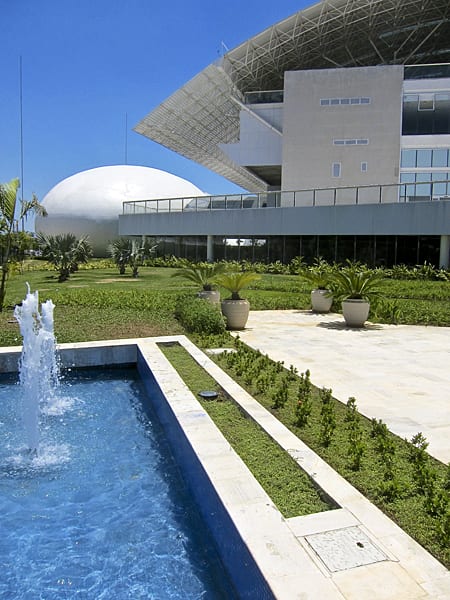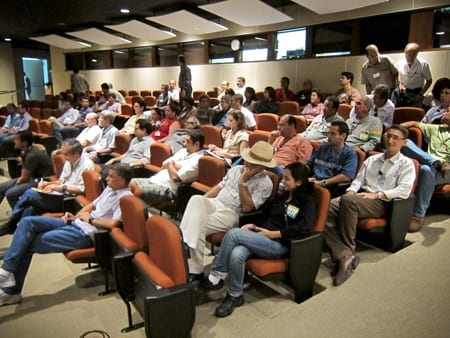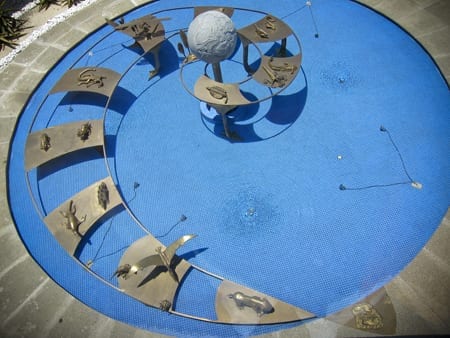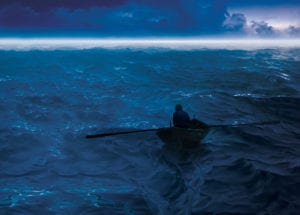By Daniel de la Calle
from Ipanema Beach, Brazil
This past Friday the 28th A Sea Change screened at the CENPES center in Rio de Janeiro. It is a massive 25 acre complex that employs over 1,500 biologists, chemists, marine ecologists and engineers working in interdisciplinary groups at the Petrobras headquarters, one of the leading research centers of its kind in the world. Here »

they are studying all renewable energy sources, from wind to geothermal, from cell batteries to biodiesel (Brazil is arguably the leading nation on sugarcane biodiesel tech).
Heading up Guanabara Bay from downtown Ipanema Beach I had two reasons for concern about the morning ahead:
first, I wondered how many of these scientists would show up for a 9AM screening made public via internal emails in these empty and distracted weeks before Carnival, and second, what their response to a film so openly opposed to the use of fossil fuels would be. Fortunately, my friend Suzana Sattamini had once again done a fantastic job and the results were simply outstanding. We had an almost full house watching our documentary and half the audience stayed throughout the 40 minutes of fruitful Q&A (see picture).

My overall impression is that everyone devoting time and attention into the current environmental situation is more or less under a similar frame of mind: our impact on nature is too obvious to go unnoticed; we are all concerned and looking for answers, for ways of improving and moving away from a technology that has been fruitful in uncountable ways, but that is finite and has had tremendous impact on the planet. During most of the XXth century we were not aware of just how serious that poisoning was, partly thanks to the natural CO2 sequestration the oceans were doing for the atmosphere, but out of knowledge comes responsibility and to continue following the same path is simply unacceptable. I am not stating that this is the way Petrobras as a stately run company sees the industry it is a part of, but, putting aside possible twisted interpretations of PR work, the fact that companies like Petrobras are investing so heavily on clean tech, on research and into other sources of power is a clear indicator that they are aware and looking ahead.
After the screening we went to visit a sculpture Suzana and other Brazilian artists have created and that was recently inaugurated inside Cenpes last year. It is a spiral of life that chronologically shows all eras of life in this planet. Each one is represented by an animal that at some point inhabited the land that we now call Brazil:

from Precambrian, through Cambrian, Ordovician, Silurian, Devonian, Carboniferous (with the only life sized creature, a 5 ft wing spanned dragonfly), Permian, Triassic, Jurassic, Cretaceous, Tertiary all the way to “our” Quaternary with some human footprints (Suzana’s husband Paulo’s).
Let’s aim for a “Quinternary” that does not have a shameful human footprint.


